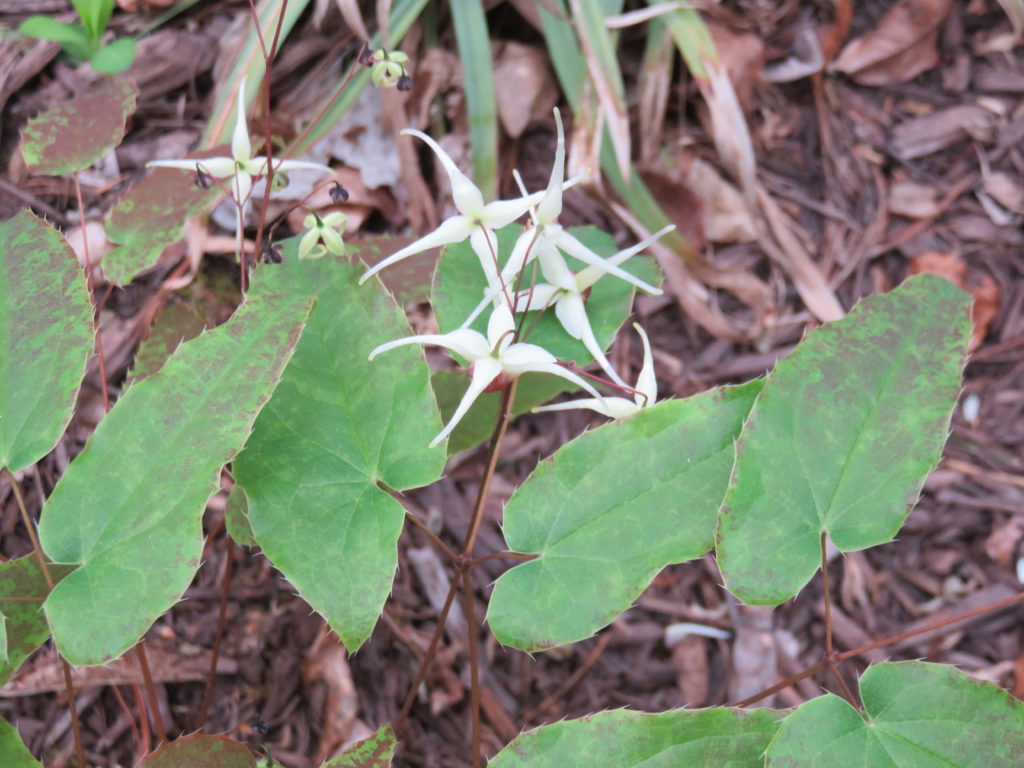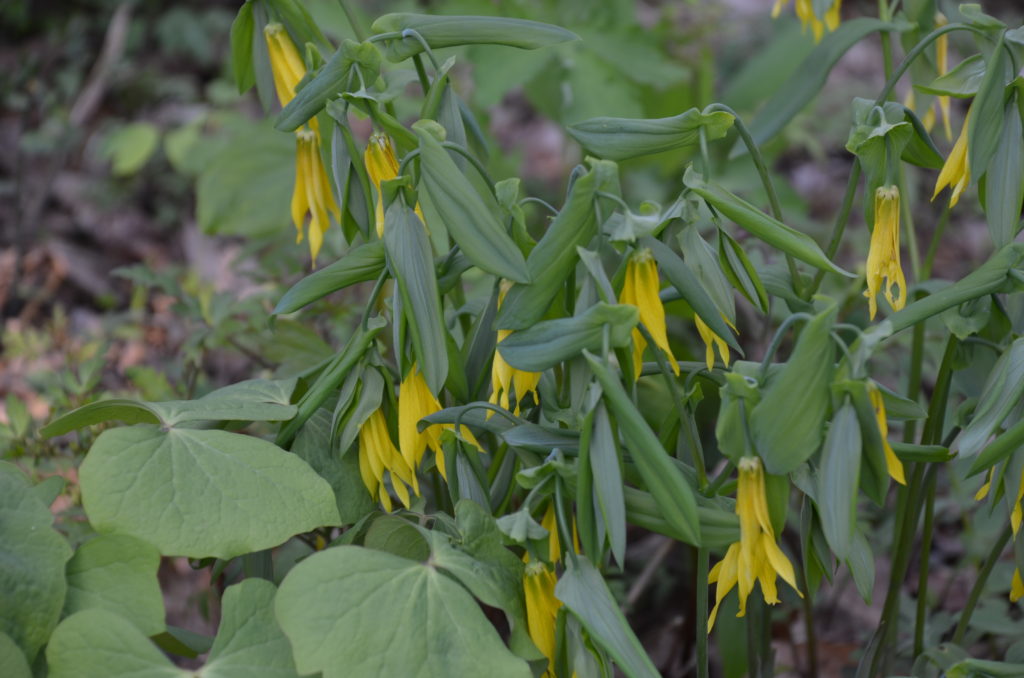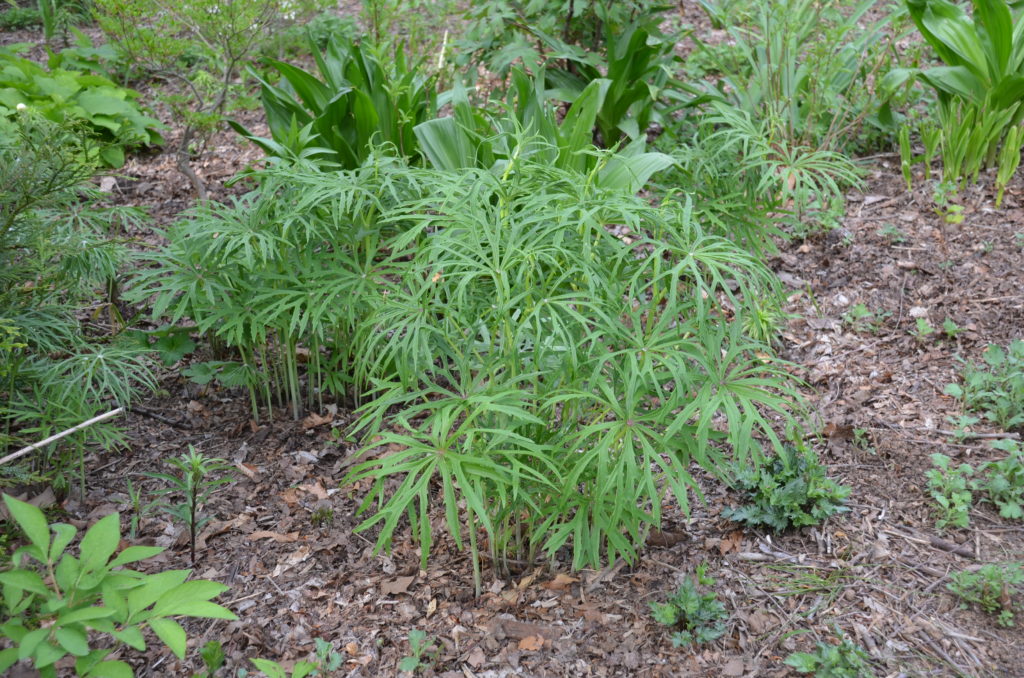What three wildflowers can handle intense woodland shade. To most gardeners, hostas, Solomon seal, coral bells (Heuchera spp.), brunneras, and ferns are popular favorites. Expand your plant choices with these three shady favorites which are long-lived, low-care gems – Fairy wings (Epimedium spp), bellworts (Uvularia spp.), and shredded umbrella plant (Syneilesis).

Fairy wings (Epimedium spp.), aka barrenworts, thrive in shady spots. They’re a plant collector’s dream. Over 70 species, hybrids, and cultivars can be found in the garden marketplace. No two cultivars are alike in flowering, foliage size and color. The species alone may vary from 6 to 20 inches in height, 10 to 24 inches in spread, and flower power.
Fairy wings are a plant collector’s dream. Some species are evergreen and most are deciduous. Foliage colors may also vary seasonally. Some start out chartreuse, turn dark green in summer, and finish in autumn shades of red. Others may develop a red or silvery tint in the summer.
Their dainty flowers appear in early spring, but are rarely hurt by cold morning temps. Flowering intervals last 3, sometimes 4, weeks and attract early arriving pollinators. Deer rarely bother fairy wings.

Bellworts (Uvularia spp.), aka merrybells, contribute to spring’s awakening in U.S. woodlands and shade gardens. On two species, U. grandiflora and U. perfoliata, the flower stems poke through (perforate) the center of the leaves. Medium green leaves turn clear yellow in early fall. A third species called “wild oats” (U. sessilifolia) is native to Canada and eastern and central U.S. woodlands.
Bellworts bloom in April and May here in eastern Tennessee. They’re among the easiest of wildflowers to grow. Their nodding bell-shaped flowers appear delicate looking, but are hardy and enduring. Over the years individual clumps colonize among themselves from thick fleshy underground stolons.
Shredded umbrella plant (Syneilesis aconitifolia), native to eastern Asia, are abit more finicky to grow. In early spring exquisite dissected umbrella-like leaves emerge covered with hairy silver hairs. Plants stand 18 -24 inches tall atop sturdy stems. As the plant ages, pubescent hairs disappear and leaves turn deep forest green. Over the years, small plant colonies arise from underground rhizomes (2 feet wide in 5-7 years). Flowers are mostly inconspicuous.

All three plants prefer partial to full shade in humus-rich, moist, well-drained woodsy soil. They perform best in dappled morning sunlight. Fairy wings and bellworts tolerate dry calcareous (limestone) soils. Plants tolerate short dry spells lasting 2-3 weeks once they have established after the first year. Humus will supply much of the needed nutrients. Young emerging shoots may be damaged by slugs.

 Posted in
Posted in 
